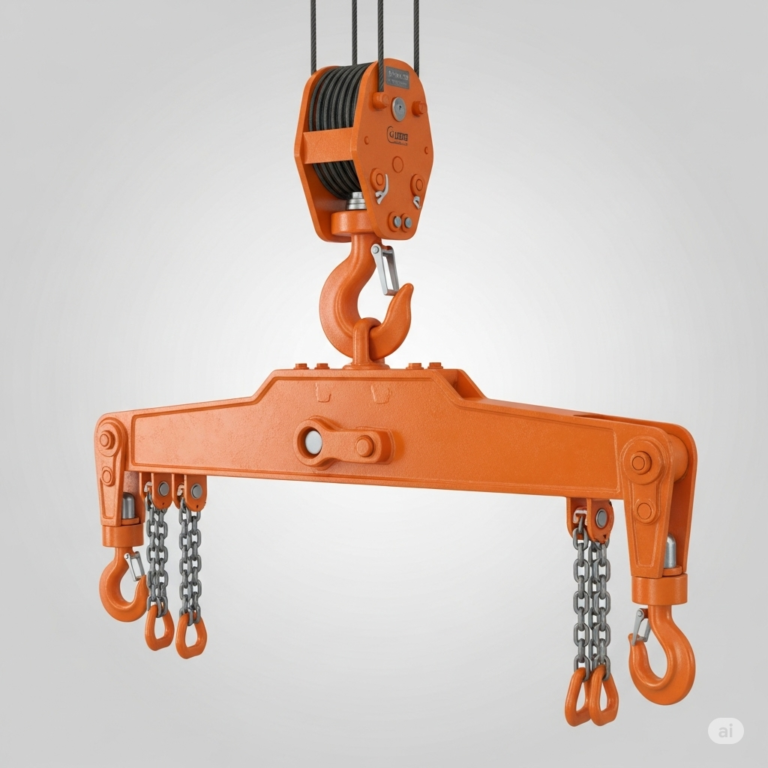In the world of heavy lifting and material handling, precision and safety are paramount. Whether it’s construction, shipping, manufacturing, or any other industrial sector, lifting large or awkwardly shaped loads requires more than just brute strength—it demands smart engineering and carefully selected tools. Often overlooked by those outside the industry, the spreader bar plays a critical role in ensuring that heavy loads are lifted safely, evenly, and without damage.
What is a Spreader Bar?
Typically, it consists of a horizontal beam with attachment points on either end where slings or chains can be connected. It is used in conjunction with a crane or hoisting system.
The Design of a Spreader Bar
Spreader bars come in various designs depending on the specific requirements of a job. However, most share a few key features:
-
End Fittings: Hooks, shackles, or eye bolts where lifting slings are attached.
-
Central Lifting Point: The point where the spreader bar is connected to the crane or hoist.
-
Adjustability: Some modern spreader bars can be extended or shortened to accommodate different load sizes.
Engineers design these bars by calculating the expected loads, material properties, and stress distribution to ensure maximum safety.
How Does It Work?
When a crane lifts a load with a single sling, the weight concentrates at one point, creating high stress and potentially damaging the load. A spreader bar, however, changes the game. It acts as a lever, transferring the lifting force into horizontal compression on the bar itself and vertical tension on the slings. This allows the load to be lifted from two or more points, distributing the force more evenly.
This is especially useful when lifting:
-
Long or wide objects like beams, pipes, or containers
-
Fragile equipment that could be damaged by concentrated pressure
-
Loads that need to stay level during transport
Applications Across Industries
Spreader bars are widely used across several sectors:
-
Construction
-
For lifting steel beams, concrete panels, or pre-fabricated components.
-
Helps in positioning items precisely without risk of tipping or damage.
-
-
Shipping and Logistics
-
Essential for lifting containers, especially those stacked or tightly packed.
-
Prevents containers from twisting or becoming unstable.
-
-
Oil and Gas
-
Used to handle heavy pipes, valves, and machinery.
-
Reduces the risk of dangerous equipment swings or misalignment.
-
-
Aerospace and Manufacturing
-
Protects delicate aircraft parts and machinery during movement.
-
Maintains balance when transporting asymmetrical items.
-
-
Entertainment Industry
-
Used for safely rigging lighting or heavy stage equipment in arenas and theaters.
-
Advantages of Using Spreader Bars
The use of a spreader bar offers numerous benefits that go beyond just lifting:
-
Enhanced Safety: By distributing the load evenly, it reduces the risk of dropped loads or equipment failure.
-
Load Stability: Helps maintain the horizontal balance, minimizing movement during lifting.
-
Equipment Protection: Prevents structural damage to the items being lifted.
-
Operator Control: Makes maneuvering large items more predictable and controlled.
-
Regulatory Compliance: Meets industry standards for heavy lifting safety.
Customization and Innovations
Today’s engineering advancements allow for custom spreader bars designed for specific tasks. These may include features like:
-
Telescoping arms for adjustable width
-
Rotating joints to allow for angular positioning
-
Lightweight materials like aluminum alloys for easier handling
-
Integrated load sensors to monitor force in real time
Some spreader bars are even designed for underwater use, built to resist corrosion and pressure during subsea operations.
Safety Considerations
Despite their advantages, spreader bars must be used correctly to ensure safety. Here are key safety guidelines:
-
Inspection Before Use: Check for cracks, rust, deformations, or wear on lifting points.
-
Proper Load Rating: Never exceed the bar’s rated load capacity.
-
Correct Sling Angles: Ensure that slings are attached at appropriate angles to avoid over-stressing.
-
Balanced Load: Make sure the load is evenly distributed on both sides of the bar.
-
Certified Equipment: Use only spreader bars tested and certified to meet industry standards (e.g., ASME B30.20).
Common Mistakes to Avoid
Even seasoned operators can make errors when using spreader bars. Some common mistakes include:
-
Improper sling selection
-
Ignoring the center of gravity
-
Using damaged or unauthorized components
-
Not aligning with lifting standards or regulations
Avoiding these mistakes is essential for keeping workers and materials safe.
Conclusion
The spreader bar may appear to be a simple tool, but its role in modern lifting operations is profound. It enables industries to move heavy and awkward loads with precision, efficiency, and, most importantly, safety. Whether lifting a shipping container from a cargo ship, positioning a steel beam on a skyscraper, or handling delicate aircraft machinery, the spreader bar proves itself as an indispensable piece of equipment.
By understanding its function, benefits, and proper usage, industries can elevate not just their materials—but also their standards of safety and operational excellence. When used wisely, the spreader bar doesn’t just lift loads—it lifts performance.

